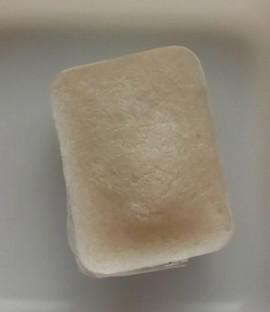Marine Biotechnology ( IF 3 ) Pub Date : 2024-03-05 , DOI: 10.1007/s10126-024-10295-y Abdias Fernando Simon Sales , Karolyne dos Santos Jorge Sousa , Amanda de Souza , Mirian Bonifacio , Tiago Akira Tashiro Araújo , Matheus de Almeida Cruz , Márcia Busanello Costa , Daniel Araki Ribeiro , Lívia Assis , Cintia Cristina Santi Martignago , Ana Cláudia Rennó

|
The present study aims to characterize and to evaluate the biological effects of a skin dressing manufactured with the organic part of the Chondrilla caribensis marine sponge (called spongin-like collagen (SC)) associated or not to photobiomodulation (PBM) on the skin wound healing of rats. Skin dressings were manufactured with SC and it was characterized using scanning electron microscopy (SEM) and a tensile assay. In order to evaluate its biological effects, an experimental model of cutaneous wounds was surgically performed. Eighteen rats were randomly distributed into three experimental groups: control group (CG): animals with skin wounds but without any treatment; marine collagen dressing group (DG): animals with skin wounds treated with marine collagen dressing; and the marine collagen dressing + PBM group (DPG): animals with skin wounds treated with marine collagen dressing and PBM. Histopathological, histomorphometric, and immunohistochemical evaluations (qualitative and semiquantitative) of COX2, TGFβ, FGF, and VEGF were done. SEM demonstrates that the marine collagen dressing presented pores and interconnected fibers and adequate mechanical strength. Furthermore, in the microscopic analysis, an incomplete reepithelialization and the presence of granulation tissue with inflammatory infiltrate were observed in all experimental groups. In addition, foreign body was identified in the DG and DPG. COX2, TGFβ, FGF, and VEGF immunostaining was observed predominantly in the wound area of all experimental groups, with a statistically significant difference for FGF immunostaining score of DPG in relation to CG. The marine collagen dressing presented adequate physical characteristics and its association with PBM presented favorable biological effects to the skin repair process.
中文翻译:

用海洋海绵有机部分制成的皮肤敷料与光生物调节对动物模型伤口愈合的影响
本研究旨在表征和评估用加勒比软骨鱼海绵(称为海绵状胶原蛋白(SC))的有机部分制造的皮肤敷料与光生物调节(PBM)相关或不相关的皮肤伤口愈合的生物效应老鼠。皮肤敷料采用 SC 制造,并使用扫描电子显微镜 (SEM) 和拉伸试验对其进行表征。为了评估其生物学效应,通过手术建立了皮肤伤口的实验模型。将18只大鼠随机分为三个实验组: 对照组(CG):有皮肤伤口但不进行任何处理的动物;海洋胶原敷料组(DG):用海洋胶原敷料处理皮肤伤口的动物;海洋胶原敷料+PBM组(DPG):用海洋胶原敷料和PBM治疗皮肤伤口的动物。对 COX2、TGFβ、FGF 和 VEGF 进行了组织病理学、组织形态计量学和免疫组织化学评估(定性和半定量)。SEM 表明海洋胶原蛋白敷料呈现孔隙和相互连接的纤维以及足够的机械强度。此外,在显微镜分析中,在所有实验组中都观察到不完全的上皮化和存在炎症浸润的肉芽组织。此外,DG 和 DPG 中还发现了异物。COX2、TGFβ、FGF 和 VEGF 免疫染色主要出现在所有实验组的伤口区域,DPG 的 FGF 免疫染色评分与 CG 相比具有统计学显着性差异。海洋胶原蛋白敷料具有足够的物理特性,其与 PBM 的结合对皮肤修复过程产生了良好的生物学效应。



























 京公网安备 11010802027423号
京公网安备 11010802027423号